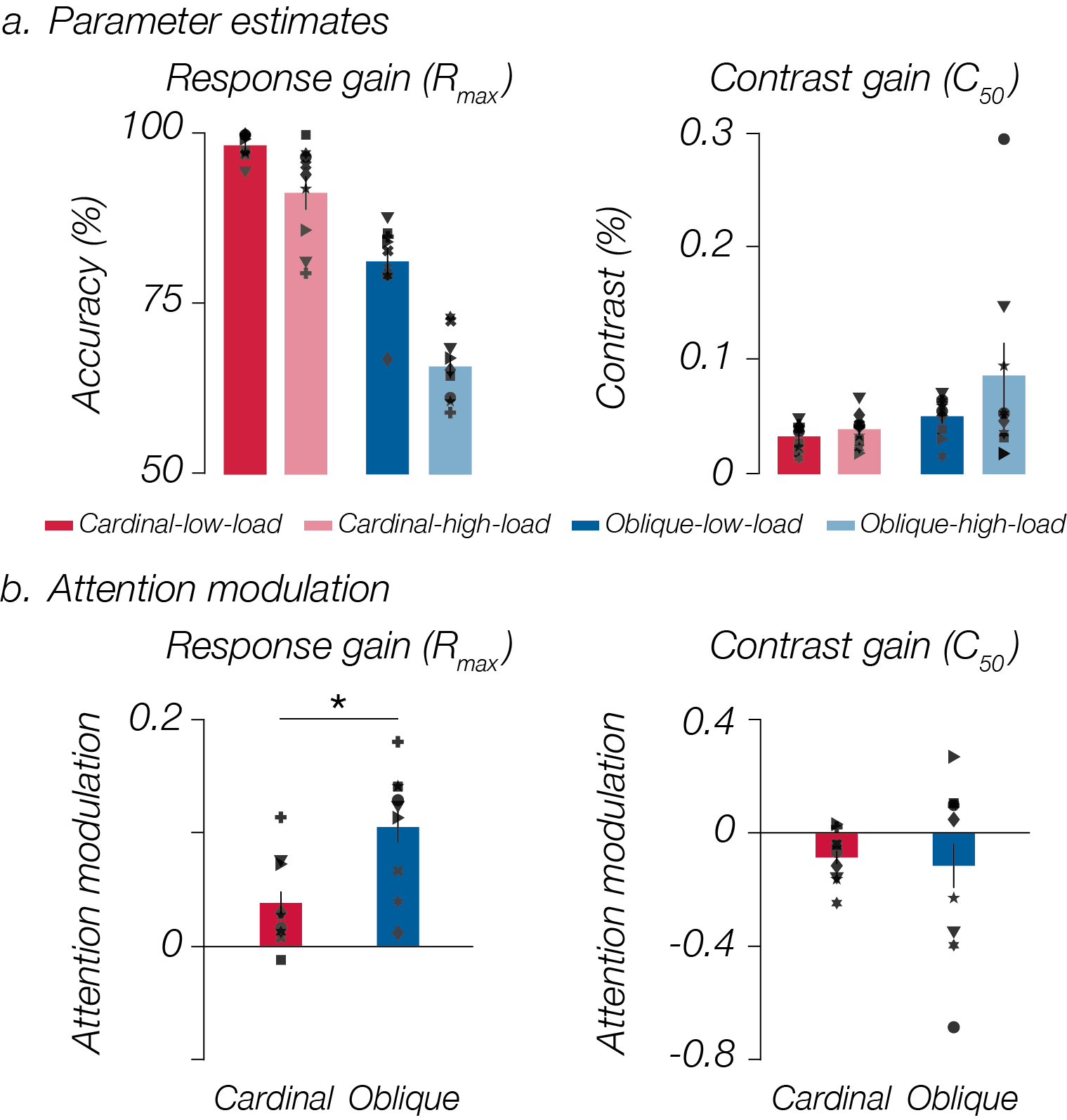Attentional modulation interacts with orientation anisotropies in contrast perception
Journal of Vision (2017)
 Orientation perception is not comparable across all orientations –a phenomenon commonly referred to as the oblique effect. Here, we first assess the interaction between stimulus contrast and the oblique effect. Specifically, we examined whether the impairment in behavioral performance for oblique versus cardinal orientations is best explained by a contrast- or response gain modulation of the contrast psychometric function. Results revealed a robust oblique effect, whereby asymptotic performance for oblique orientations was substantially lower than for cardinal orientations, which we interpret as the result of multiplicative attenuation of contrast responses for oblique orientations. Next, we assessed how orientation anisotropies interact with attention by measuring psychometric functions for orientations under low or high attentional load. Interestingly, attentional load affects the performance for cardinal and oblique orientations differently: while attentional load multiplicatively attenuates contrast psychometric functions for both cardinal and oblique orientation conditions, the magnitude of this effect is greater for the obliques. Thus, having less attentional resources available seems to impair the response for oblique orientations to a larger degree than for cardinal orientations.
Orientation perception is not comparable across all orientations –a phenomenon commonly referred to as the oblique effect. Here, we first assess the interaction between stimulus contrast and the oblique effect. Specifically, we examined whether the impairment in behavioral performance for oblique versus cardinal orientations is best explained by a contrast- or response gain modulation of the contrast psychometric function. Results revealed a robust oblique effect, whereby asymptotic performance for oblique orientations was substantially lower than for cardinal orientations, which we interpret as the result of multiplicative attenuation of contrast responses for oblique orientations. Next, we assessed how orientation anisotropies interact with attention by measuring psychometric functions for orientations under low or high attentional load. Interestingly, attentional load affects the performance for cardinal and oblique orientations differently: while attentional load multiplicatively attenuates contrast psychometric functions for both cardinal and oblique orientation conditions, the magnitude of this effect is greater for the obliques. Thus, having less attentional resources available seems to impair the response for oblique orientations to a larger degree than for cardinal orientations.

